Art and Healing: The Emotionally Raw Tapestries of Erin M. Riley
The tapestries of American textile artist Erin M. Riley are remarkably frank, depicting dark and emotionally raw subjects ranging from nude selfies and private wounds to messy, unkept tabletops scattered with the kind of awkward detritus that would make most cringe with embarrassment. In doing so, her art becomes a powerful form of catharsis, laying her experiences of the world bare and allowing her to exorcise the demons she has faced since childhood. Weaving such direct, of-the-moment images might seem at odds with the slow and methodical process of weaving, but for Riley this inherent conflict is vital to her practice, as she explains: “I can face my vulnerability and be comfortable with sharing those parts of me.”
Born in 1985 in Massachusetts, Riley was raised in a household marked by violence, an experience that undoubtedly left its scars into adulthood. Art was always there as a means of self-expression, and this naturally led her to pursue further education in fine art as a young adult. “I learned about the idea of art school through my art teacher in high school,” she recalls, “and never really questioned that concept.”
Riley studied a BFA at the Massachusetts College of Art and Design, followed by an MFA at the Tyler School of Art. Choosing a specialism during this time was a challenge for her, given the breadth of her creative interests, as she explains, “I had been sewing since I was 8 and painting and drawing all throughout high school, so I was wrestling between painting and fashion design as my major. When I found out that a fibres department even existed it seemed like the perfect in between to use all of my interests in this vague major.”
It was during her early years as an undergraduate student that Riley first discovered the therapeutic art of weaving, and she was immediately hooked. “Weaving was something that was required and taking it as a freshman in college changed my trajectory,” Riley says. It was, however, an entirely new process that she had no former experience with. She explains, “I had never seen a loom, no one in my family was in the textile world, it was just something I felt connected to.”
Drawing source material from such intimate subjects that are so often seen as shameful or embarrassing appeared on Riley’s radar relatively early in her career as an artist. “I have been making work around personal issues since I started putting pen on paper, from journaling all of my deepest darkest thoughts, to researching addiction, the effects of single parent households on identity and sexuality, and the ways in which trauma shows up within all of it,” she confesses.
Part of her attraction to this subject matter came about through a fascination with the ways different individuals are affected by traumatic experiences, which she became aware of as she and her sisters all reached adulthood. “The research was necessary because I was deeply curious how people growing up in the same household could turn out so different,” she observes, “… and with researching the issues that effected my sisters I realized my own issues and started depicting those.” This has, in turn, led her to expose some incredibly intimate thoughts and feelings, from depressive episodes to the exploration of her sexuality, on a par with the confessional art of Tracey Emin. And much like Emin, her art sheds light on taboo subjects, bringing them out into the open to loosen their threat or pain.
It is also worth pointing out just how intricately skilled her tapestries are, constructed on a floor loom in a slow and methodical process with meticulous attention to detail. Meanwhile, the rich and complex array of colours she works with reveal just how expressive, vibrant, and spirited the art of weaving can be.





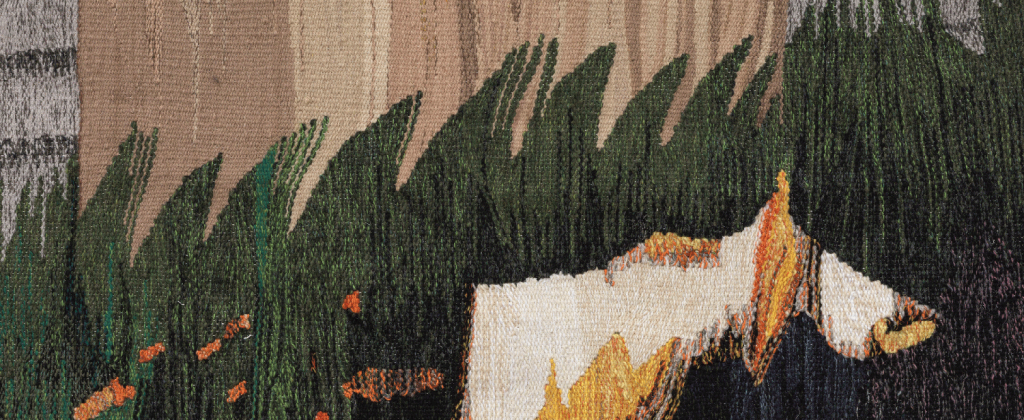
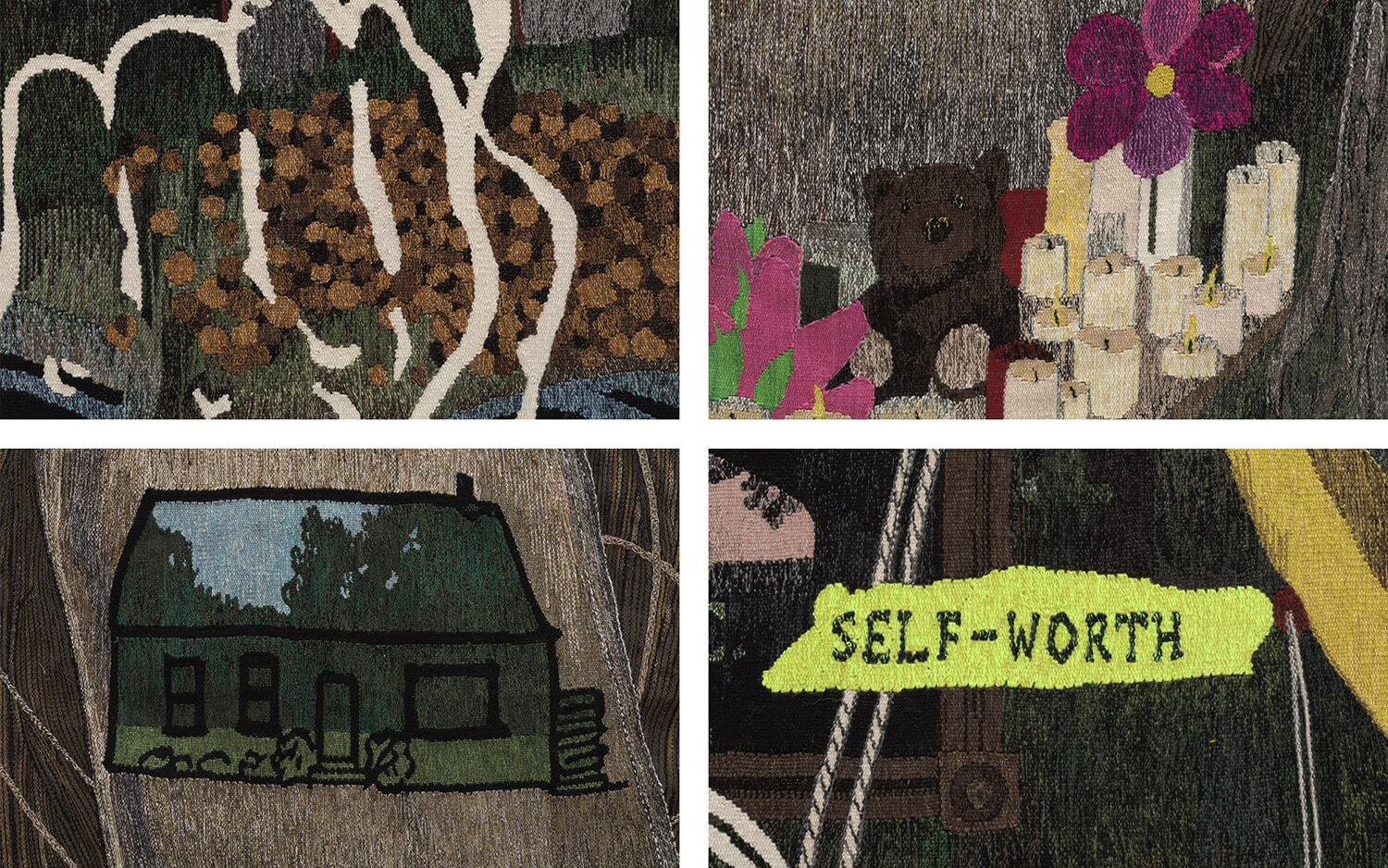
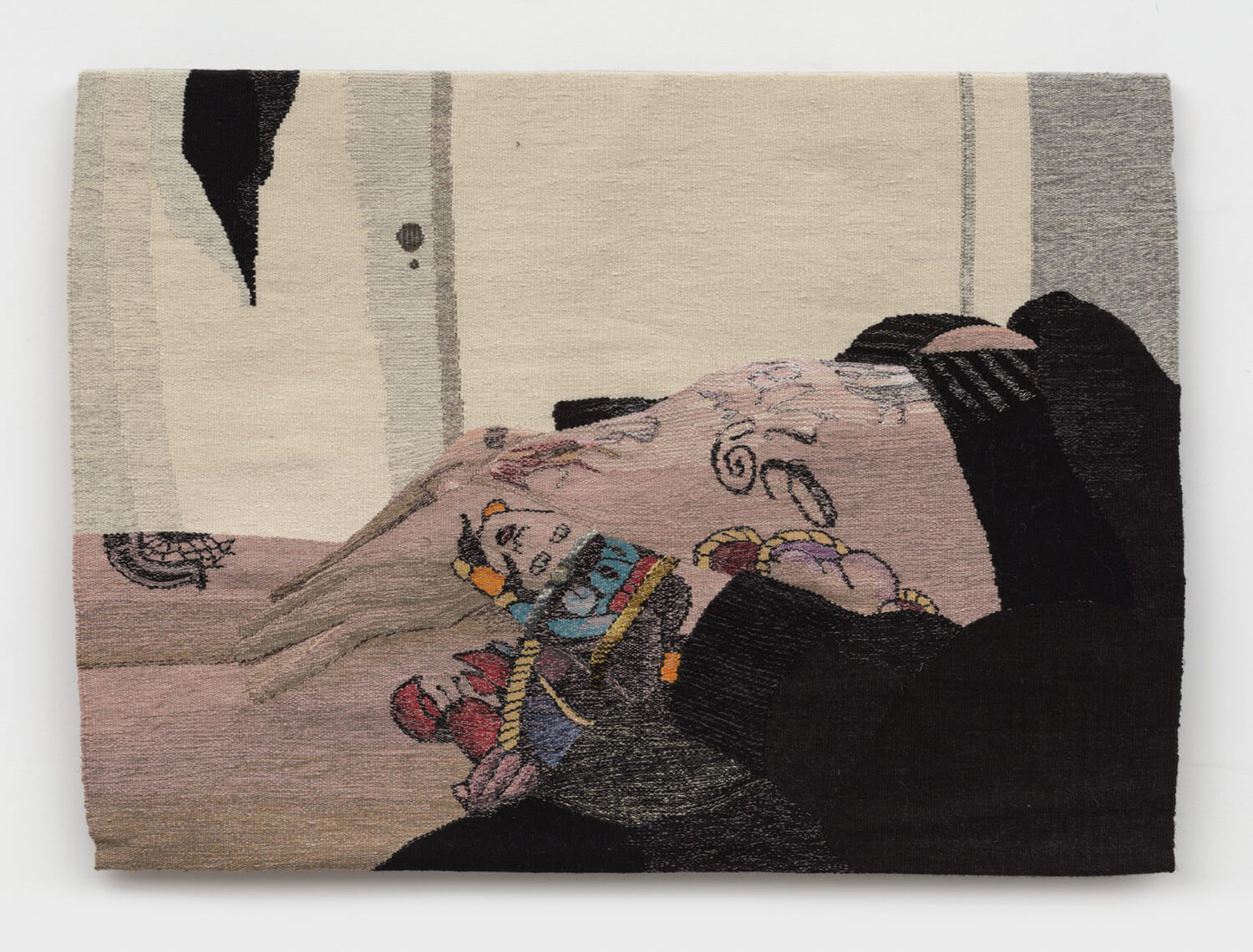
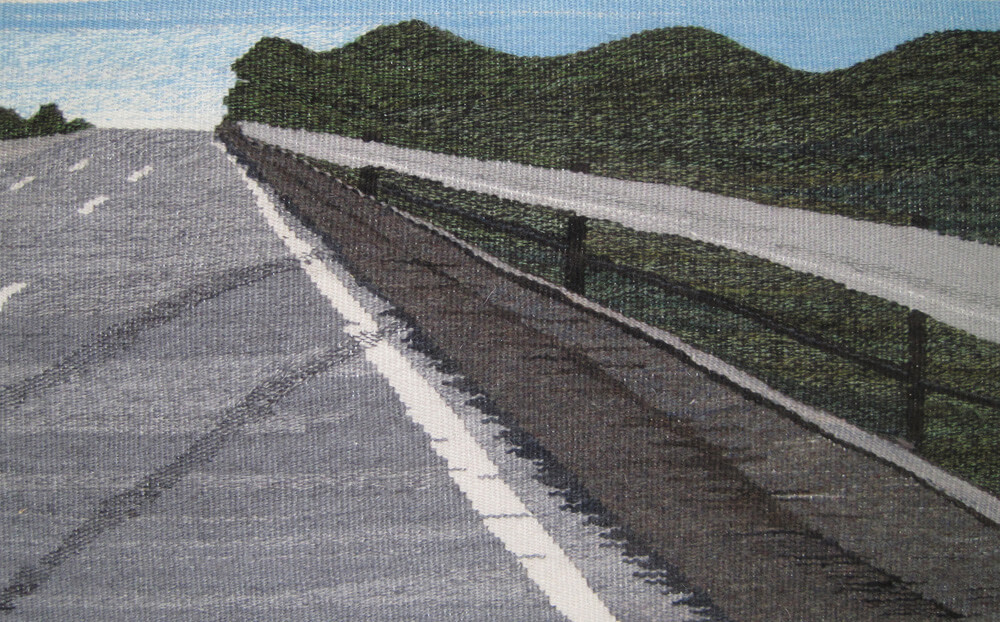
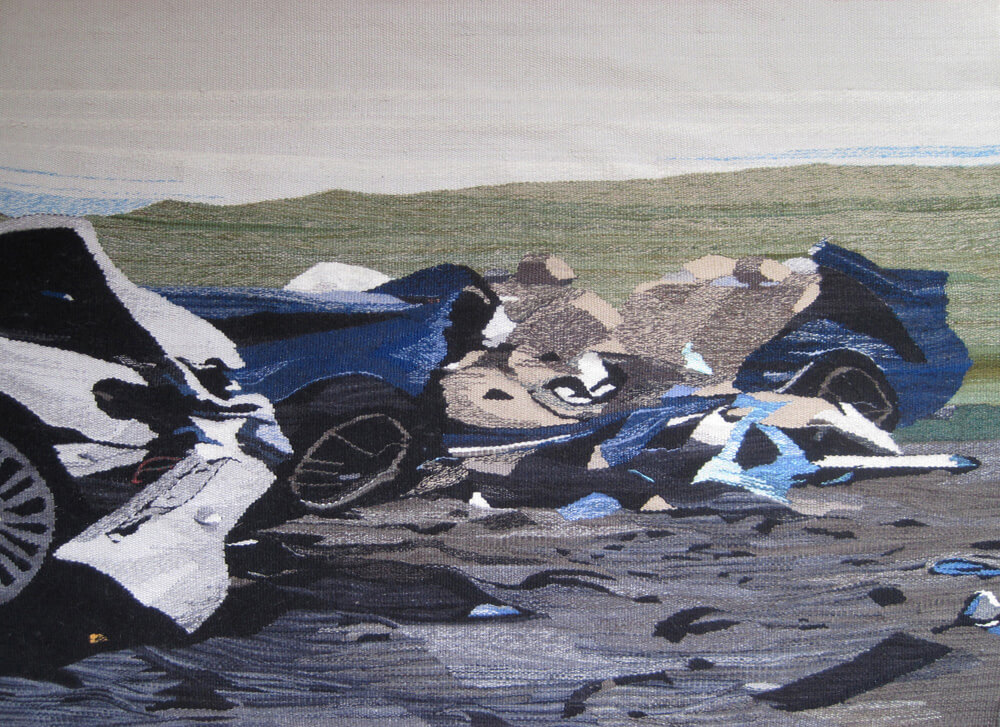
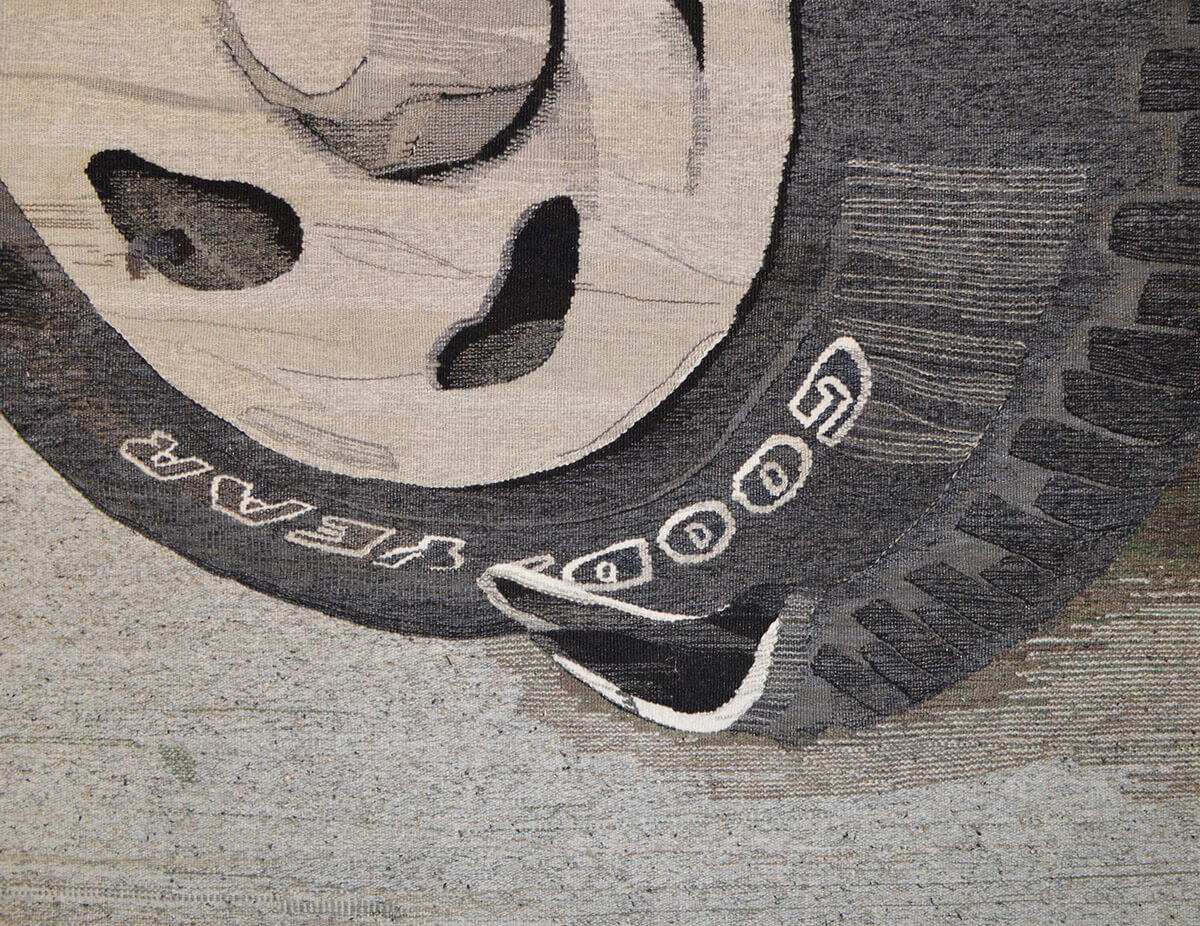

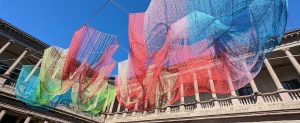
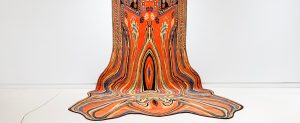
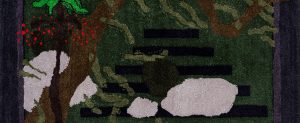
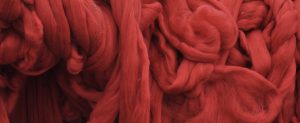
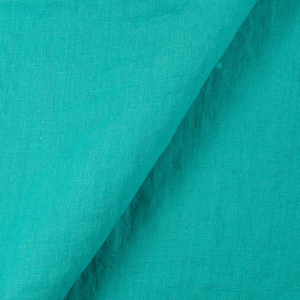


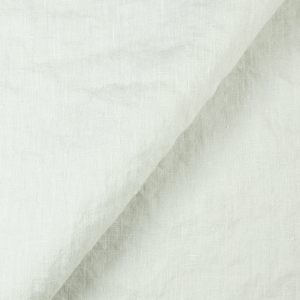

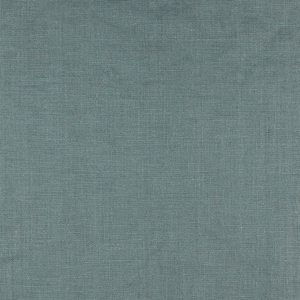





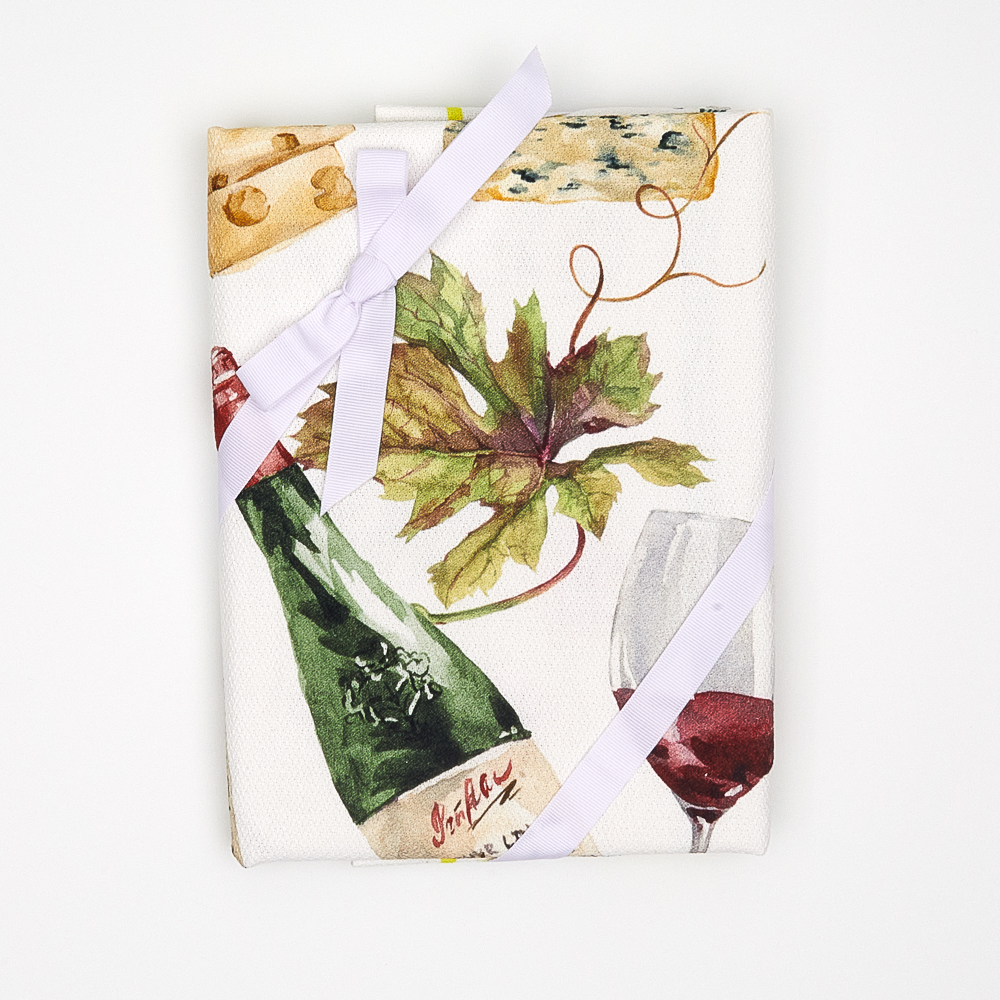














Leave a comment